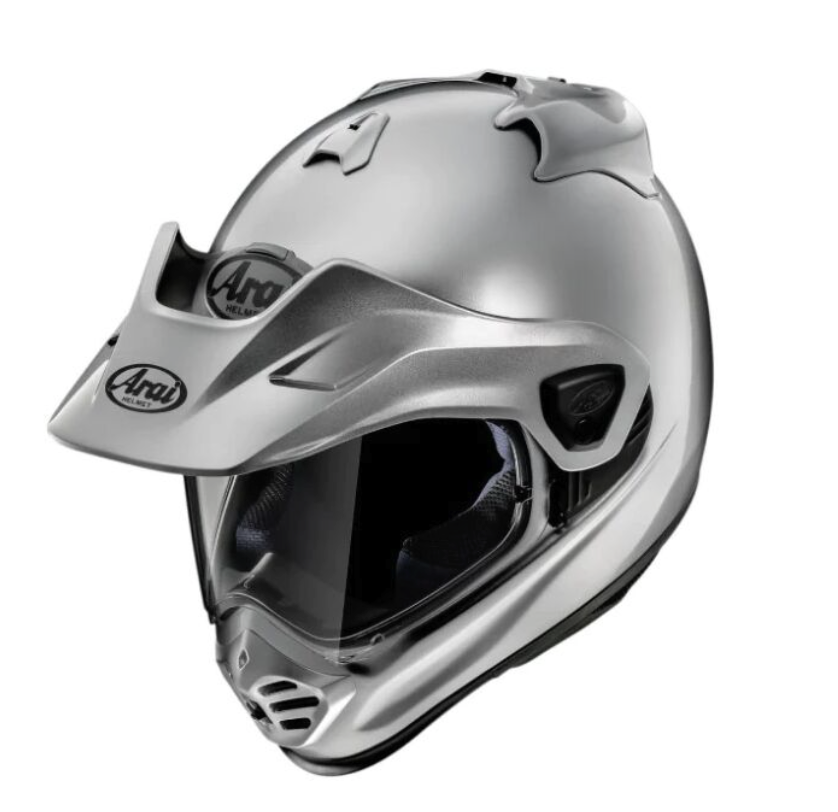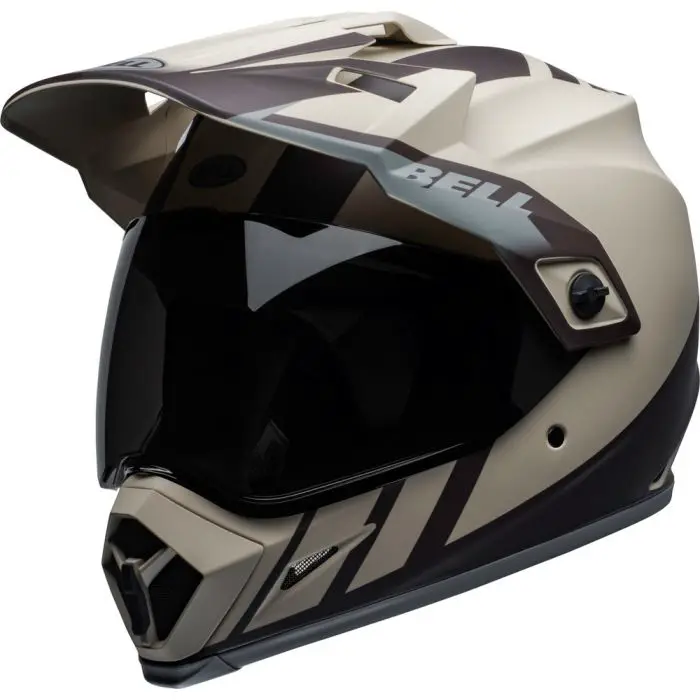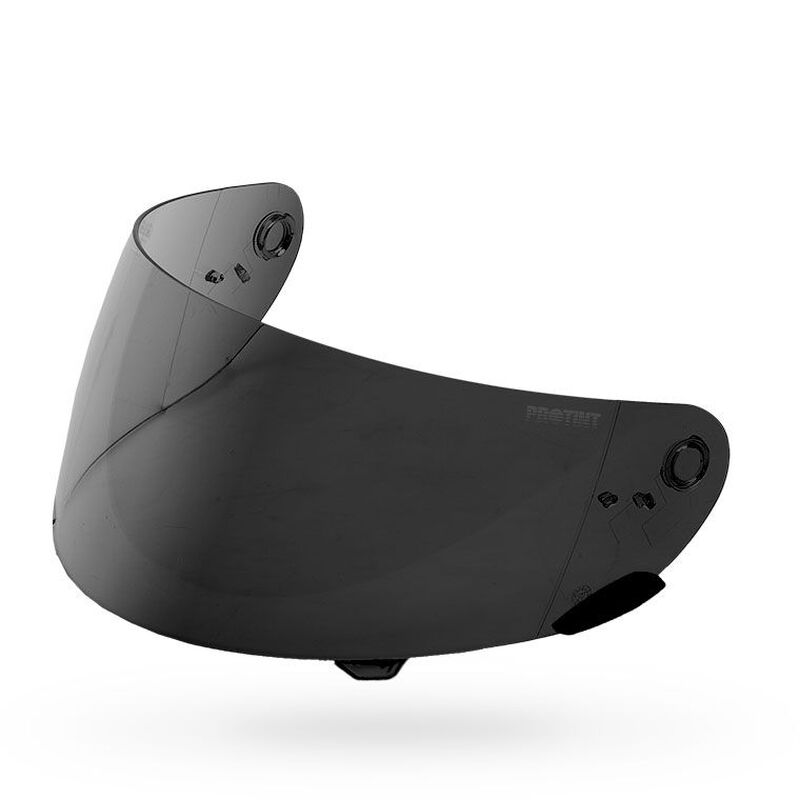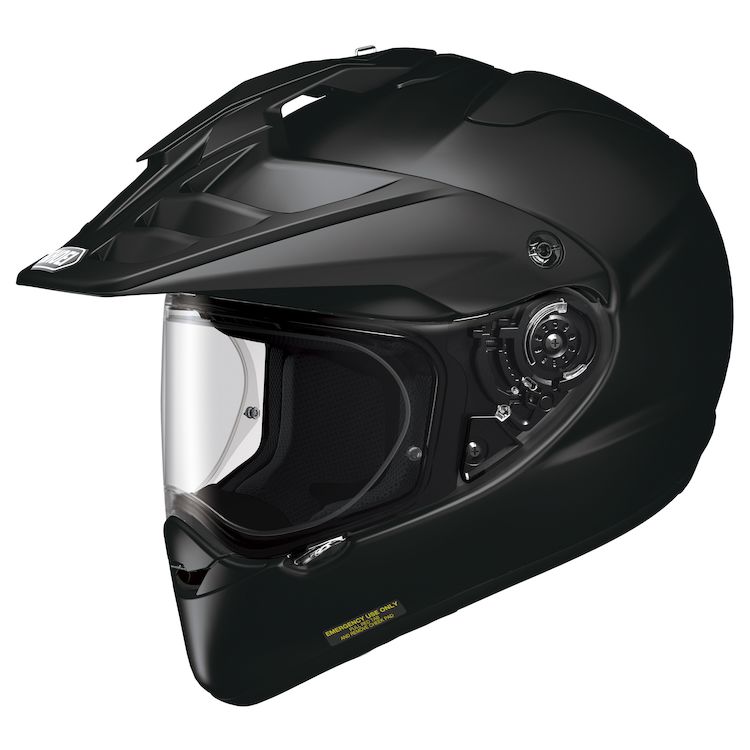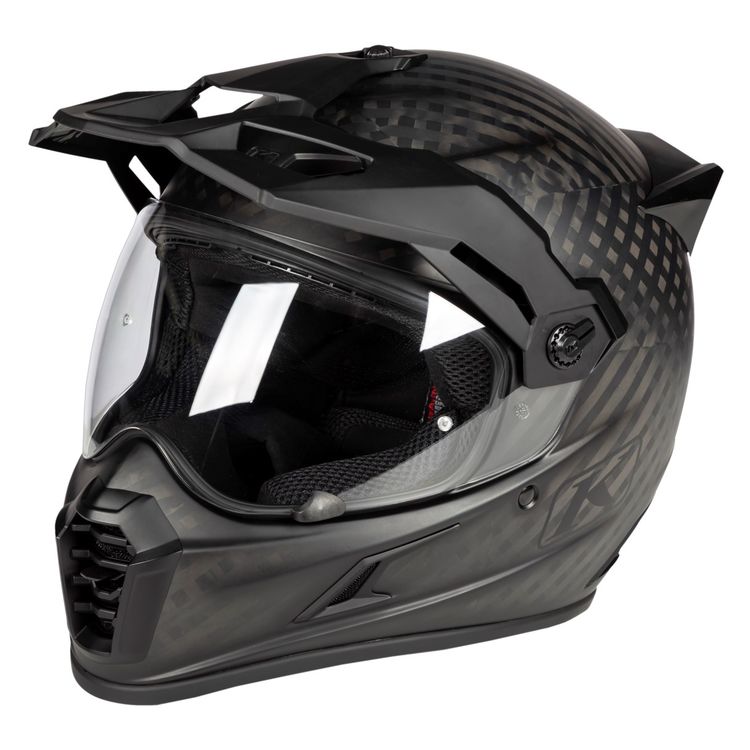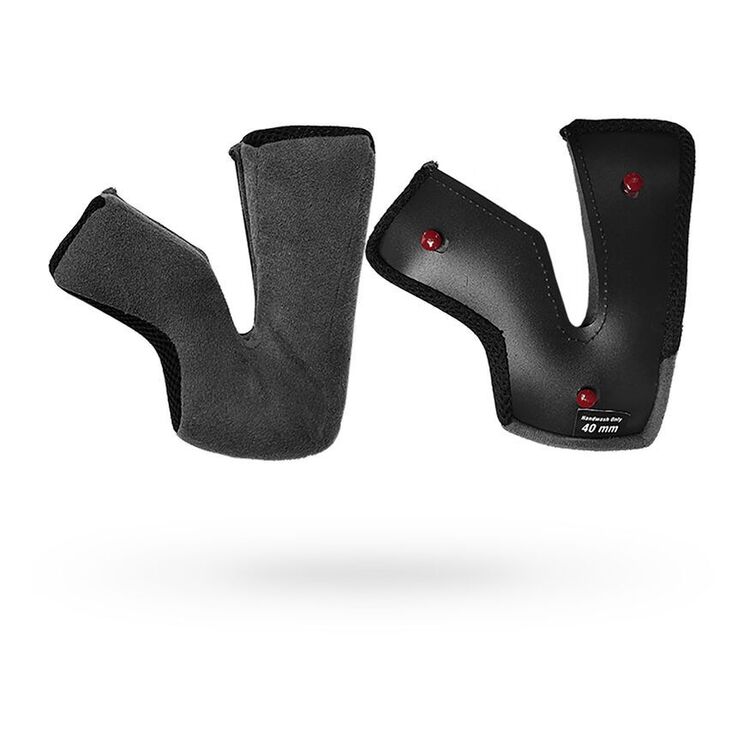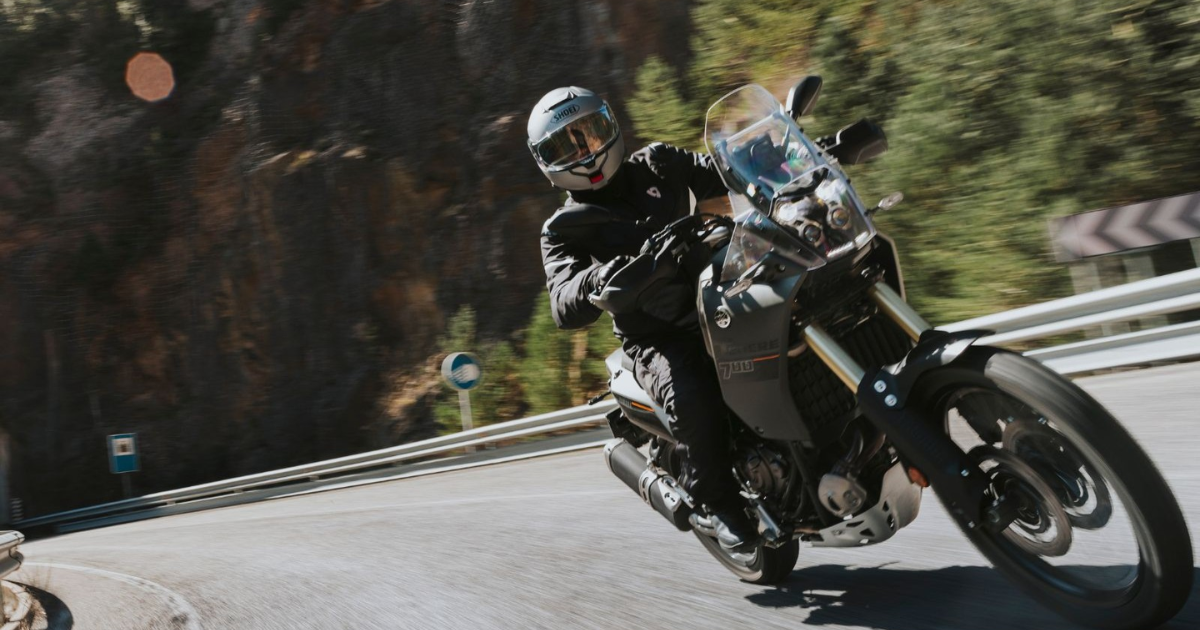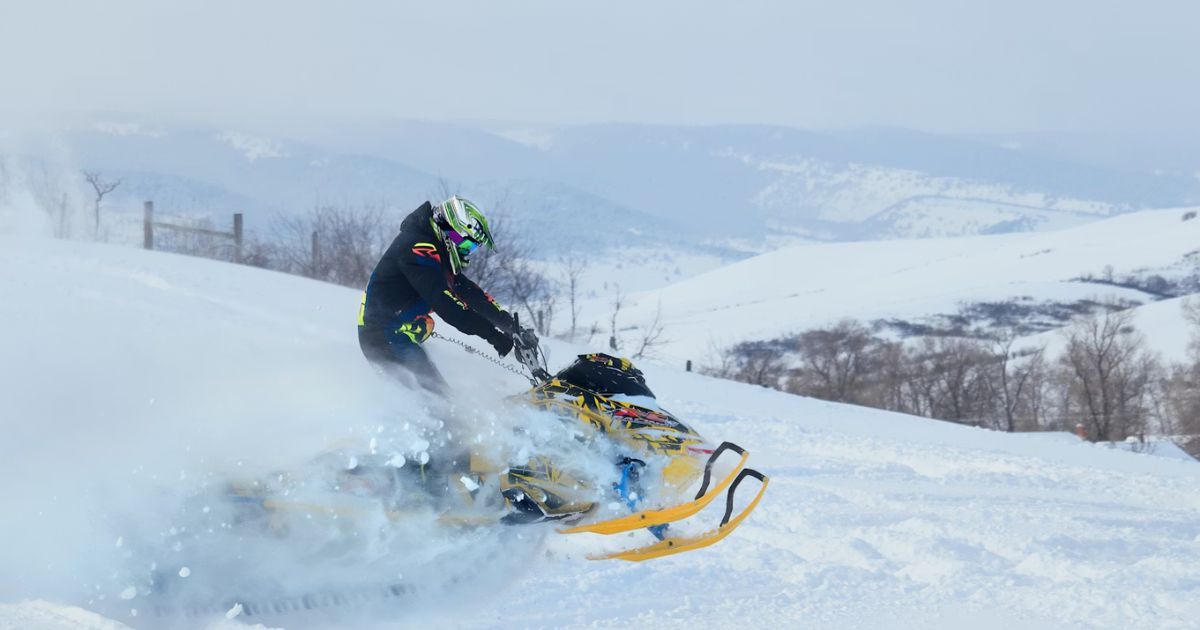
Arai XD-5 vs Bell MX-9: Best Choice for ADV Touring?
left for contents
Adventure and dual-sport riders often face a tough choice when it comes to helmets: do you spend big on premium protection and refinement, or save money with a proven budget option that still checks the safety boxes?
The Arai XD-5 and Bell MX-9 Adventure MIPS sit on opposite ends of that spectrum. Both target ADV riders who split time between pavement and dirt, but they differ sharply in price, construction, and long-ride comfort.
This comparison breaks down how they perform in the real world and which helmet best suits your riding priorities. Before diving into the details, here’s the quick verdict to show which helmet makes sense for different riders.
Quick Take: Who Each Helmet Is Really For
Who should buy the Arai XD‑5:
- Riders who prioritize the highest levels of impact protection. The XD‑5 uses Arai’s Peripherally Belted Complex Laminate shell, a one‑piece multi‑density EPS and meets Snell M2020, DOT and ECE 22.06 standards.
- Tourers who ride long distances and want a quiet, refined helmet. Reviewers consistently praise its aerodynamic peak and shell for low wind noise even at highway speeds.
- Those who need adjustability and premium fitment. The XD‑5 offers three configurations (peak+shield, peak only with goggles or street‑only shield), multiple vent settings and peel‑away interior pads for micro‑fit adjustments.
The sequel to the legendary XD-4 helmet, this lid improves in every way from its round shell design to its versatility and comfort whether you're thrashing trails or cruising on the highway.
- Quietest ADV helmet
- Removable peak
- Tons of ventilation
- Can use with googles (visor can be removed)
- DOT and Snell approved (ECE in Europe)
- None - one of the best ADV and touring helmets
Who should buy the Bell MX‑9 Adventure MIPS:
- Riders on a budget who still want a versatile dual‑sport helmet. At roughly $230–$290 street price, it costs hundreds less than the Arai while still offering a convertible street/off‑road design.
- Those who ride mostly in hot climates. The MX‑9’s velocity‑flow ventilation system with multiple always‑open intakes moves a lot of air, keeping riders cool during summer and off‑road use.
- Buyers who value MIPS rotational impact protection. The MX‑9 integrates the Multi‑Directional Impact Protection System (MIPS) into its polycarbonate shell, something uncommon at this price point.
A helmet that delivers far more than its price suggests, it's a great starter ADV lid that covers all the bases.
- MIPS liner reduces rotational force in crash
- Large visor for great visibility
- Removable peak for comfortable highway miles
The Arai XD‑5 is worth ~+$600 if you care most about premium safety certification, quieter aerodynamics and a fully adjustable fit; otherwise, the Bell MX‑9 Adventure MIPS delivers very good performance for the money but trades refinement for affordability.
Spec Sheet Showdown: How They Stack Up
| Specs | Arai XD‑5 | Bell MX‑9 Adventure MIPS |
|---|---|---|
| Weight | Approximately 1.70–1.75 kg (3 lb 13 oz) in medium; heavier due to composite shell. | Around 1.66–1.70 kg (3 lb 10.8 oz) in medium, making it one of the lighter ADV helmets. |
| Fit/Shape | Intermediate‑oval with peel‑away foam pads for micro‑adjustment; three configuration options (peak + shield, peak only, shield only). | Intermediate‑oval; runs true to size; three shell and EPS sizes; convertible by removing the shield or peak but less adjustable internally. |
| Shell/Materials | PB‑cLc² composite shell with Super Fibre belt; one‑piece multi‑density EPS liner; handmade in Japan. | Lightweight polycarbonate/ABS shell with MIPS slip‑plane; EPS‑lined chin bar. |
| Safety Certifications | Snell M2020, DOT and ECE 22.06; R75 round profile designed to glance off impacts. | DOT and ECE (older versions 22.05, newer models 22.06); includes MIPS for rotational protection. |
| Ventilation/Weatherproofing | Large chin vent with mouth and inner shutters, front logo (forehead) duct, three‑position crown vent and fixed exhausts; peak sits high, so rain intrusion is minimal though there’s no internal sun visor. | Velocity‑flow system with adjustable mouth vent, two always‑open jaw vents, two always‑open top vents and four rear exhausts; excellent airflow but can be noisy and let rain in. |
| Electronics | No electronics; large speaker pockets and re‑sculpted Hyper‑Ridge for comms mounting. | No electronics; built‑in speaker pockets for comms devices. |
| Warranty | 5‑year limited warranty from purchase, or seven years from manufacture. | 5‑year warranty against defects in workmanship and materials. |
| Street Price (typical as of Aug 2025) | $840–$950 depending on colour and graphics. | $230–$290 for the standard MIPS version; $260–$350 for graphic and ProTint options. |
Which Rider Are You? Match Your Helmet to Your Style
Choose the Arai XD‑5 if…
- Safety is your non‑negotiable priority. The XD‑5 uses Arai’s composite PB‑cLc² shell and one‑piece multi‑density EPS liner to meet Snell M2020, DOT and ECE 22.06 standards. Riders who want a helmet built to racing‑grade standards will appreciate the extra peace of mind.
- You ride long distances at high speeds. Its smoother, more aerodynamic peak produces less turbulence and buffeting, and independent testers note that it remains stable and quiet on the freeway. This reduces fatigue during day‑long tours.
- You need a dial‑in fit. Micro‑fit peel‑away cheek and temple pads and three configuration options mean the XD‑5 can transition from ADV to street to off‑road. Riders with tricky head shapes or those who wear goggles will find the large eye‑port and removable peak/shield particularly useful.
- You prioritize quality and longevity. Handmade in Japan with a refined interior and durable hardware, the XD‑5 feels premium and typically lasts beyond the five‑year warranty when cared for.
- Noise matters to you. Numerous reviewers comment on the XD‑5’s low wind noise compared to other adventure helmets, so if you value a quieter ride, this helmet excels.
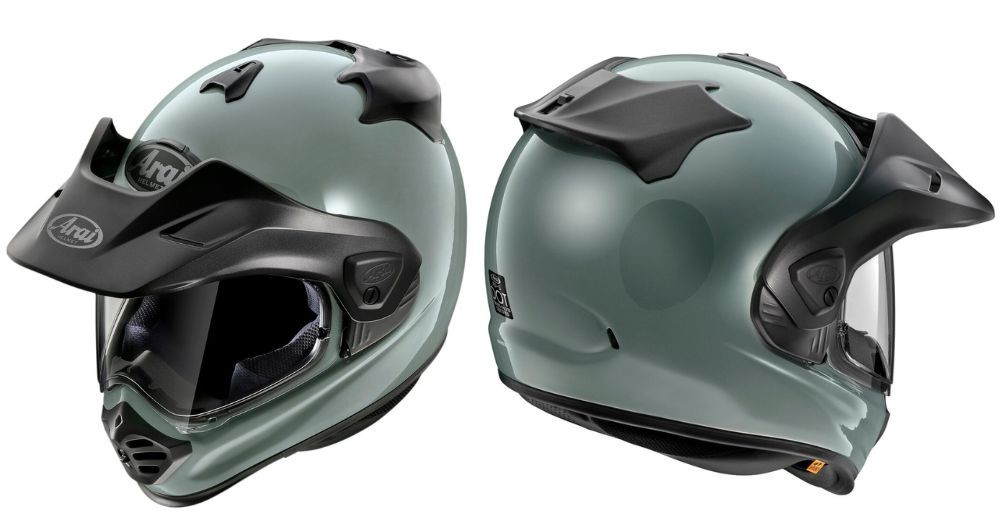
Source
Choose the Bell MX‑9 Adventure MIPS if…
- Your budget caps at around $300. The MX‑9 Adventure MIPS costs roughly one‑third of the Arai yet still offers a dual‑sport configuration. If price is critical, this helmet delivers good value.
- You ride in hot climates or off‑road. Its velocity‑flow ventilation system moves a tremendous amount of air through the helmet, making it more comfortable in tropical or desert conditions. Always‑open top vents and multiple intakes keep you cool.
- You want MIPS rotational protection. MIPS helps reduce rotational forces in certain impacts, and the MX‑9 offers this technology at a budget price.
- You’re okay with some wind noise. Owners report noticeable wind noise due to open vents and the polycarbonate shell. If you wear earplugs regularly or mostly ride at lower speeds, the noise may be acceptable.
- You prefer a lighter helmet. At roughly 1.67 kg, the MX‑9 is about 50–80 g lighter than the Arai, which may reduce neck fatigue on long days.
- You don’t need a premium finish. The MX‑9’s materials and liner feel more basic than the Arai, but owners find it durable enough for years of use.
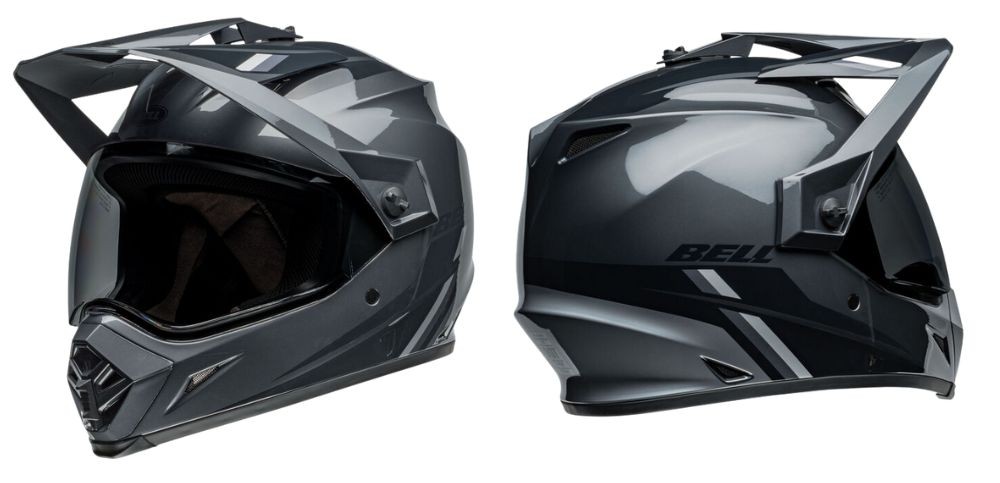
Source
From the Saddle: What Owners Actually Say
Arai XD‑5
- Reviews highlight the XD-5’s premium feel and overall quietness.
- The new peak sits further forward, reducing lift while still letting airflow under the visor.
- Some riders complain the peak doesn’t pivot low enough to block a low sun.
- Testers consistently praise the large eye-port, which fits goggles easily and gives excellent peripheral vision.
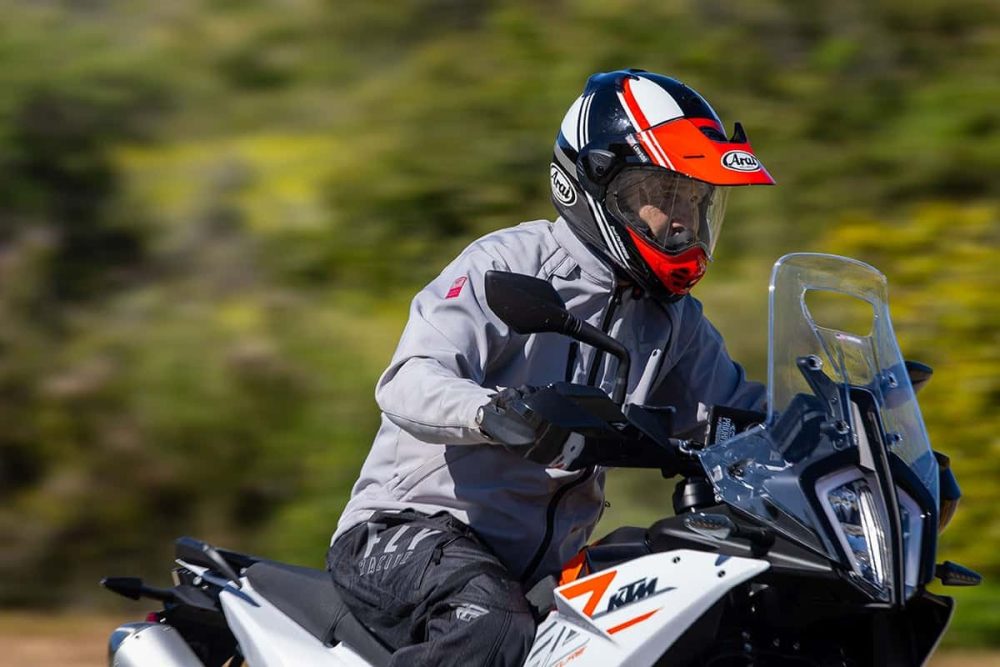
Source
- Riders value the helmet’s convertibility between ADV, dual-sport, and street modes, though removing the peak still needs a tool.
- The comfort liner is plush, with micro-fit foam pads that let riders fine-tune pressure points.
- At around 1.7 kg (3.8 lbs), it’s heavier than many carbon-fibre competitors, and some owners note fatigue on long rides from holding the large composite shell.
For a deeper dive into long-term impressions, see our full Arai XD-5 review.
Bell MX‑9 Adventure MIPS
- Owners appreciate the versatility and budget-friendly price.
- The polycarbonate shell and MIPS slip-plane add reassurance for impact protection.
- Ventilation is rated outstanding, especially in hot weather or off-road use.
- The always-open top vents cause wind roar and can let in rain or cold air on highways.
- Lacking an internal sun visor, riders must swap shields or wear sunglasses; the DLX version with the ProTint photochromic shield solves this but raises cost to around $350.

Source
- Long-term owners say the finish and padding are basic compared to premium lids but still hold up over thousands of miles.
- The peak can catch wind at high speeds, and many remove it for long highway stints to reduce buffeting.
- Overall satisfaction is high among budget-conscious riders, though most agree it’s noisier and less comfortable for extended highway touring.
If you’d like to know how the MX-9 holds up over years of use, check out our long-term Bell MX-9 review.
Battle Tested: Breaking It Down by Riding Realities
Noise & Aerodynamic Stability
Arai XD‑5: Aerodynamic refinement is one of the XD‑5’s standout features. The new peak sits lower and is shaped to reduce drag, while the PB‑cLc² shell has a smooth R75 profile that helps the helmet glance off the wind instead of catching it. Reviews consistently note lower wind noise compared with other adventure helmets. At high speeds the helmet remains stable, and the peak does not generate excessive lift. Some riders still experience whistling when turning their head at highway speeds, but it is minor.
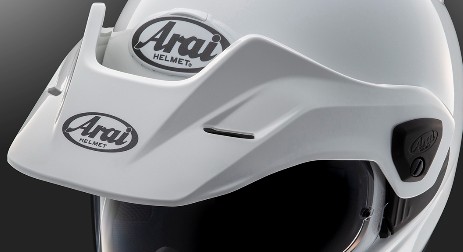
Source
Bell MX‑9 MIPS: The MX‑9 is noticeably noisier. Always‑open top and side vents allow turbulent air into the shell, creating a constant roar at highway speed. Riders who remove the peak for freeway use report that noise improves slightly but that the helmet remains louder than most touring helmets. The lighter polycarbonate shell can also transmit more vibration. Earplugs are recommended for long rides. However, for off‑road or slow‑speed adventure touring, the open vents help evaporate sweat and keep dust moving, making noise less of an issue.
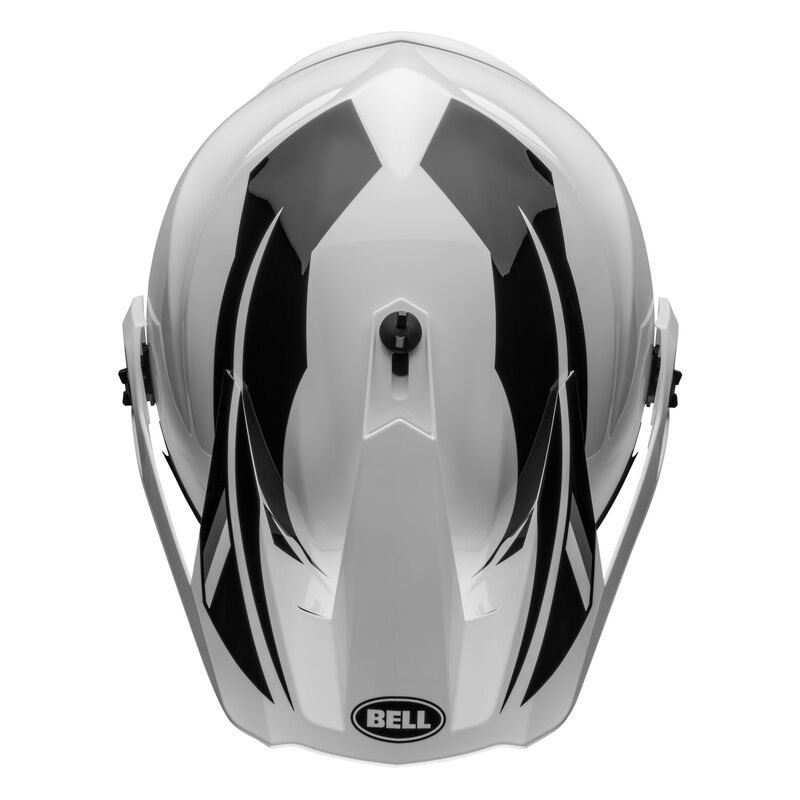
Source
Touring riders or commuters who value quiet should lean toward the XD‑5. Off‑road or summer riders willing to wear earplugs may find the MX‑9’s airflow worth the extra noise.
Weight & Fatigue
Arai XD‑5: The composite shell and additional EPS density make this helmet heavier. At about 1.70–1.75 kg, it feels substantial when picking it up. On the road, the balanced weight distribution and aerodynamic stability minimize perceived heaviness, but after all‑day rides some riders experience neck strain. The weight contributes to the impression of quality and may aid in impact performance.
Bell MX‑9 MIPS: Weighing around 1.67 kg, the MX‑9 is slightly lighter. The difference of roughly 50–80 g may not sound like much, but when combined with its lower centre of gravity it reduces fatigue on long, bumpy trails. Adding accessories such as comms units and action cameras brings the weights closer, and some owners feel the difference is negligible.
Riders sensitive to helmet weight or those spending hours on technical trails may appreciate the MX‑9’s lighter feel; those prioritizing robust composite construction and top‑tier certifications may accept the XD‑5’s extra grams.
Ventilation & Weather Handling
Arai XD‑5: Arai redesigned the chin vent to double its intake area compared with the XD‑4. The mouth shutter and inner shutter allow riders to direct air toward the mouth or up toward the shield to combat fogging.

Source
The 3D logo duct on the forehead provides additional intake without compromising shell strength, and there are multiple exhaust ports. All intake vents (except the fixed exhaust) can be closed, making the XD‑5 more adaptable to cold or wet weather. Reviewers note that the helmet remains comfortable in warm climates but does not move as much air as the MX‑9, and there can be some fogging when idling if the vents are closed.
Bell MX‑9 MIPS: Ventilation is the MX‑9’s strong suit. The adjustable mouth vent feeds a channel across the face shield, while two always‑open jaw vents and two always‑open top vents push large volumes of air through the EPS liner. Four rear exhaust ports expel warm air.

Source
This design keeps riders cool even during strenuous off‑road sections but cannot be shut completely, allowing water and cold drafts during rain or winter rides. Fogging is rarely an issue because of the constant airflow. Riders in humid climates appreciate this breathing room, whereas those in cooler regions may find it too drafty.
For year‑round touring with varied weather, the XD‑5’s adjustable ventilation provides greater control. For high‑temperature riding or slow technical trails where maximum airflow is needed, the MX‑9 excels.
Visor & Sun Protection
Arai XD‑5: The helmet uses Arai’s VAS‑A Max Vision face shield with a Pinlock insert and an all‑new peak. The shield can be removed without tools; the peak requires loosening one screw on each side. The peak sits higher, improving airflow but limiting how far down it can be angled to block low sun. There is no drop‑down sun visor, so riders must rely on tinted face shields or sunglasses. The large eye‑port easily accommodates goggles for off‑road use.
Since the XD-5 doesn’t include a drop-down sun visor, most riders turn to tinted or photochromic shields for glare protection. Arai’s VAS-A Max Vision shields are available in clear, smoked, and mirrored options — all designed to fit seamlessly with the XD-5.
Stylish mirrored shield with Pinlock prep boosts sunlight glare reduction, clear sight, and adds rugged, ANSI-rated glare protection—without sacrificing visual clarity.
- Mirror finish reduces glare for bright sunlight
- Pinlock-ready for reliable anti-fog performance
- High optical clarity maintains accurate vision
- Exceeds Z87.1/VESC-8 safety standards
- Mirror coating scratches easily if cleaned improperly
- Tints may still be too bright for dim or night rides
Bell MX‑9 MIPS: The MX‑9’s face shield features a NutraFog II anti‑fog/anti‑scratch coating and can be removed quickly with a spring‑loaded mechanism. The peak is adjustable and removable without tools. There’s no internal sun visor; for glare reduction you can fit Bell’s photochromic ProTint shield (standard on the DLX model) or wear sunglasses. The eye‑port is goggle friendly. Users report that the peak causes noticeable drag at high speeds and can catch crosswinds; removing it improves aerodynamics but sacrifices sun shade.
The MX-9 offers Bell’s ProTint photochromic shield — standard on the DLX and available as an upgrade for others. It adjusts automatically to light conditions, making it one of the most convenient solutions for riders who switch between day, dusk, and trail.
Photochromic face shield that auto-adjusts tint in changing light, offering seamless visibility day to night without switching visors.
- Instant tint adaptation from bright to low light
- Preserves optical clarity for safer vision
- Eliminates need to carry extra shields
- Fits multiple Bell models with Panovision ports
- Darkening speed may lag in rapid light shifts
- Not approved for use as standalone eye protection
Both helmets lack an internal sun visor. The Arai’s peak is more aerodynamically refined but offers less sun blocking range. The Bell’s peak blocks sun better but creates more drag; the optional ProTint shield gives the Bell an advantage for riders who frequently transition between light conditions.
Comfort & Fitment
Arai XD‑5: Comfort is a hallmark of Arai helmets. The interior uses a soft, antimicrobial liner that feels plush against the skin. The headliner and cheek pads are fully removable and washable. Peel‑away foam segments allow riders to adjust pressure points around the temples and cheeks.
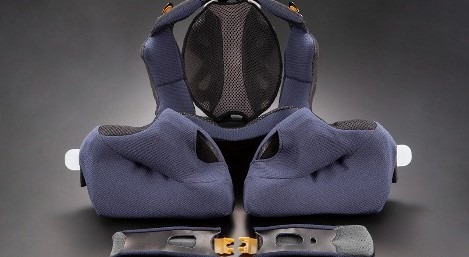
Source
The intermediate‑oval shape suits a wide range of head shapes, and the large eye‑port reduces tunnel vision. Some wearers note that the chin bar sits closer to the face than its predecessor; those with large noses may find it snug. Comms installation is straightforward thanks to deep speaker pockets and a flat outer shell around the Hyper‑Ridge. A pocket in the neck roll hides spare wire slack and keeps cables tidy.
Bell MX‑9 MIPS: Comfort is decent but less premium. The moisture‑wicking liner is removable and antimicrobial, though the padding feels thinner and becomes compacted sooner than Arai’s. Sizing runs true with an intermediate‑oval shape, though some riders with round heads note pressure points on extended rides. The helmet offers three shell sizes to keep the profile compact.
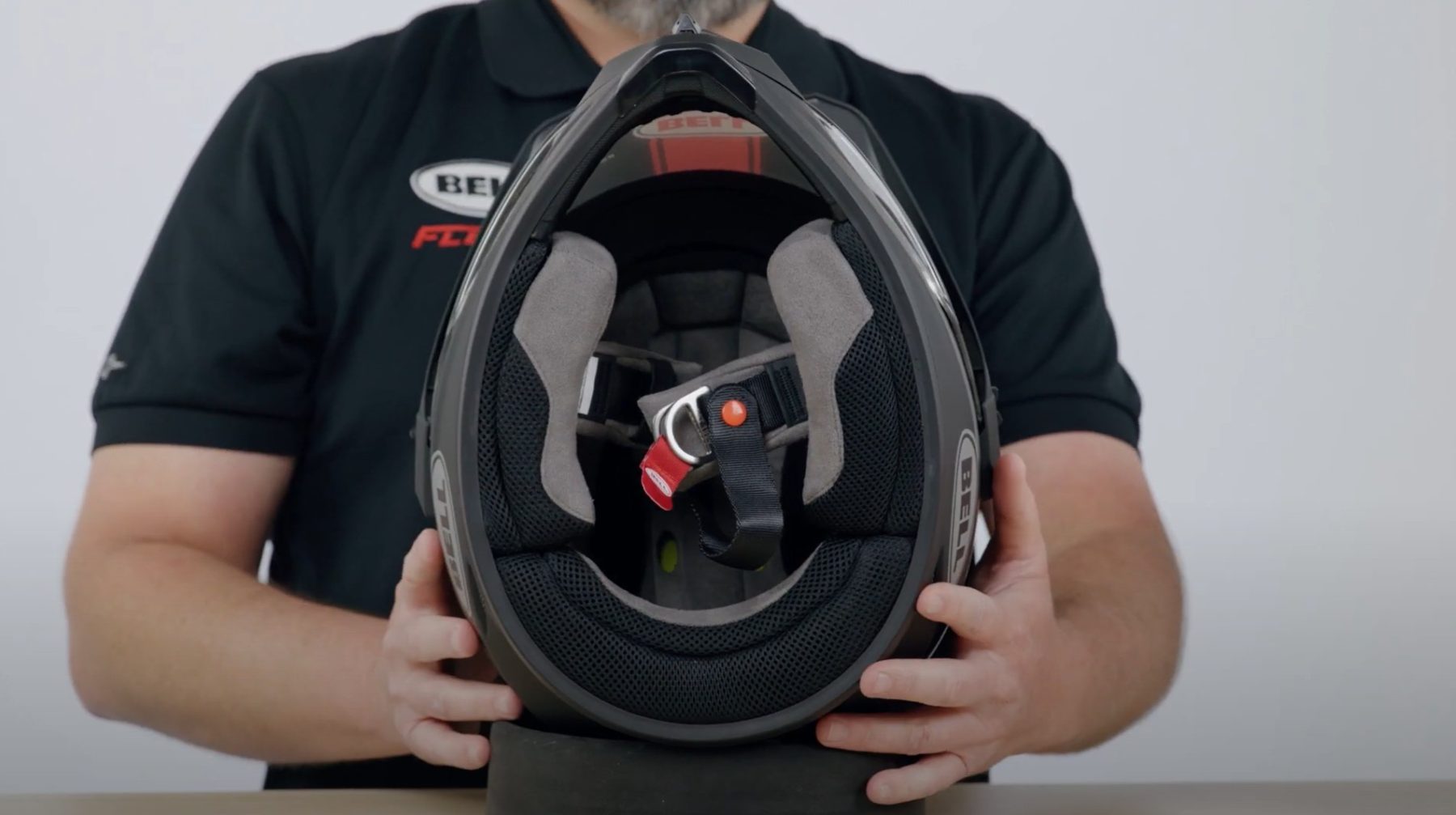
Source
Integrated speaker pockets accommodate most comm systems, though there’s no dedicated wire channel. Glasses and goggles fit without issue. Because the vents cannot be shut, there is little barrier against cold drafts, which may reduce comfort in winter.
The Arai offers a more customizable and luxurious fit; the Bell provides adequate comfort for the price but may feel basic and drafty.
Comms Readiness & Extra Features
Arai XD‑5: Arai anticipates modern communications devices. The Hyper‑Ridge has been re‑shaped to present a flat surface for mounting intercoms, and deep, wide speaker pockets accommodate thick speakers.
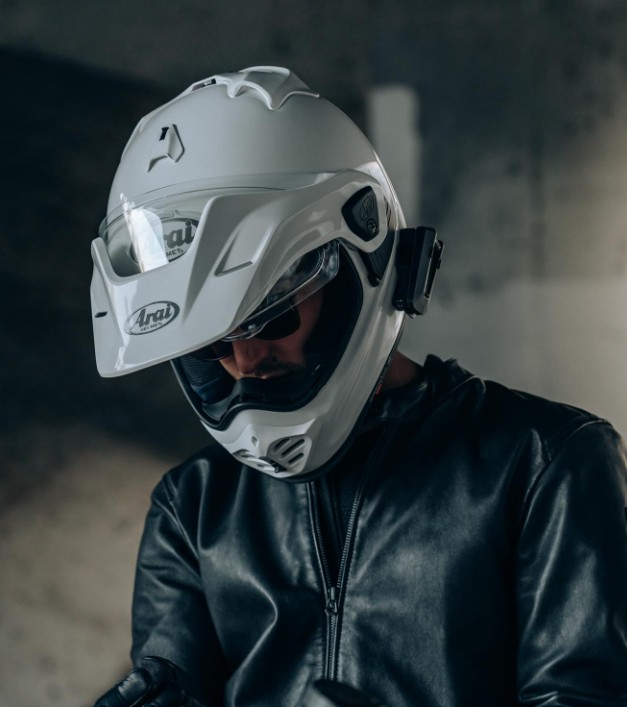
Source
A tucked‑away pocket in the neck roll keeps wiring organized and prevents pinching. The helmet comes with a Pinlock insert, but you must purchase tinted shields separately. There is no built‑in emergency cheek‑pad release system, although removal is straightforward.
Bell MX‑9 MIPS: The MX‑9 includes speaker pockets but lacks a dedicated flat mounting area; adhesives or clamp mounts can still be attached to the polycarbonate shell. The helmet does not ship with a Pinlock insert, although its NutraFog II coating helps resist fogging. The DLX version includes the ProTint shield and may come with a breath box for cold weather. There is no emergency quick‑release cheek‑pad system. Overall, the helmet is comms‑friendly but not as refined as the Arai.
Both helmets accept communications devices, but the Arai provides more thought‑out mounting surfaces and wire management. The Bell works with comms but requires more tinkering.
Dollars vs. Features: Where Your Money Goes
When shopping for an ADV‑touring helmet, the gulf between these two in price is startling: the Arai XD‑5 starts at about $840 and climbs to $950 for graphics, while the Bell MX‑9 Adventure MIPS ranges from $230 to around $290, with ProTint versions near $350. That difference of roughly $600 buys you a handmade composite shell certified to the highest standards, a quieter and more aerodynamic ride, micro‑adjustable interior fit and better finished materials.
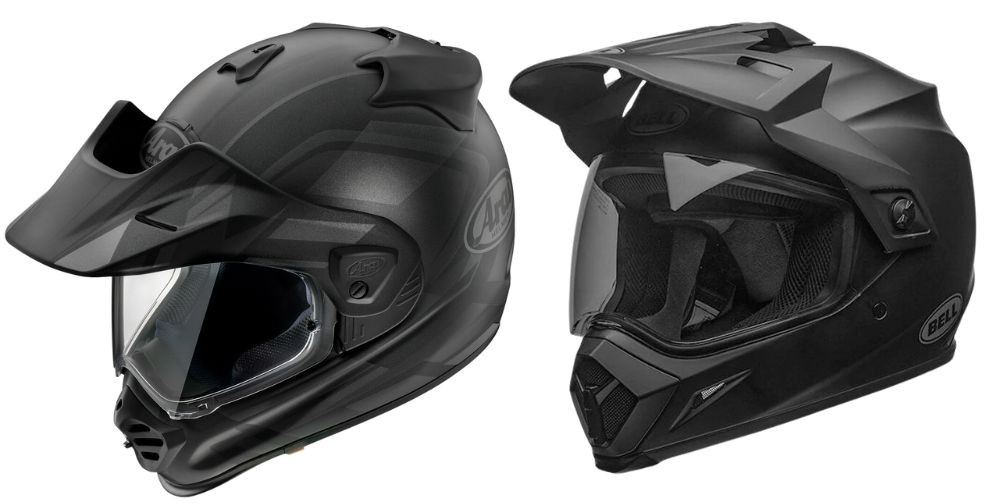
If you ride thousands of miles a year, value low noise and expect to keep your helmet for five years or more, the XD‑5’s upfront investment feels justified when amortized over time. On a cost‑per‑feature basis, the Arai offers more protection and refinement per dollar but requires a hefty initial outlay.
For riders on a tighter budget or those who primarily ride off‑road or in hot climates, the MX‑9 Adventure MIPS delivers good protection, outstanding ventilation and MIPS technology at a fraction of the cost. The savings can be allocated toward other gear or trips. Ultimately, the upgrade is worth it only if the premium features align with your priorities.
If Neither Fits: Strong Alternatives to Consider
Shoei Hornet X2: A premium ADV helmet that competes directly with the Arai. It offers a fibreglass shell certified to Snell and DOT standards, a quiet and stable peak and an internal sun‑visor‑free design similar to the XD‑5. Street price is around $715–$750. Ideal for riders who want premium quality at slightly less cost than the Arai but prefer Shoei’s fit.
Shoei Hornet X2 Adventure Helmet delivers the perfect blend of on-road comfort and off-road capability for serious adventure riders.
- Lightweight AIM+ shell for superior protection and aerodynamics
- Advanced ventilation system for optimal airflow in all conditions
- Emergency Quick-Release System for enhanced rider safety
- Runs small, sizing up is recommended
Klim Krios Pro: A carbon‑fibre ADV helmet with a very low weight (~1.45 kg), carbon shell, Koroyd impact liner and a Transitions photochromic face shield. It costs about $700–$750. Great for riders who prioritize lightness and a photochromic visor but don’t mind a looser fit and limited shell sizes.
Scorpion EXO-AT960: The updated version of the AT950, this modular ADV helmet runs about $310 and adds refinements like a drop-down SpeedView® sun visor, improved face shield with anti-fog coating, and Bluetooth-ready speaker pockets. It’s heavier than the XD-5 and MX-9 but remains one of the most versatile choices for riders who want flip-up convenience with ADV styling.
A do-everything helmet, it's as comfortable on trails as the highway - though not as solid as premium competitors like the Arai XD-5. One of the rare modular ADV helmets, it's also it's DOT and ECE approved.
- Modular chinbar (rare in ADV helmet)
- Removable peak
- Decent airflow
- Drop down sun shade
- DOT and ECE 22‑06 approved
- Susceptible to visor leaks and fogging in heavy rain
- Sun peak vibrates noticeably at highway speeds
For a wider look at the category, don’t miss our adventure helmet roundup, which includes both of these models alongside other strong contenders.
Frequently Asked Questions
How do I convert the Arai XD‑5 between street and off‑road modes?
The XD‑5 has three configurations. For street use, install the peak and face shield. For off‑road or dual‑sport riding, remove the face shield (tool‑less) and wear goggles while leaving the peak on. For pure highway use, you can remove the peak by loosening one screw on each side and leave the shield attached. Keep the screws in a safe place and reinstall them before your next off‑road ride.

Source
Does either helmet have an internal sun visor?
Neither the Arai XD‑5 nor the Bell MX‑9 Adventure MIPS includes a drop‑down sun visor. Both rely on external peaks and tinted or photochromic face shields. The Bell offers an optional ProTint shield on the DLX version; the Arai requires separate tinted or Pinlock‑compatible shields.
How do these helmets fit compared to typical street helmets?
Both helmets use an intermediate‑oval internal shape similar to many street helmets. The Arai provides micro‑fit peel‑away pads that can fine‑tune the fit around temples and cheeks.
The Bell fits true to size but has less adjustment; riders with very round or very narrow heads may need to try different cheek pads or consider another model.
Adjustable replacement cheek pads for the MX‑9 helmet offer custom fit, are washable, and help refresh worn padding—so your helmet feels as-close-to-new as possible.
- Customizable fit with multiple size options
- Removable and washable for lasting freshness
- Anti‑odor material keeps liner feeling clean
- Interchangeable across all MX‑9 shell sizes
- May compress quicker than higher-end padding
- Limited in-stock sizes during restocks
Are they compatible with glasses and comm systems?
Yes. The large eye‑ports on both helmets accommodate most eyewear and goggles. Both have recessed speaker pockets for comms. The Arai offers a flat mounting area on the shell and a neck roll wire pocket for tidy cable management; the Bell requires adhesive or clamp mounts but otherwise works well with Bluetooth units.
Which helmet works better for year‑round commuting?
For riders who commute through varied weather, the Arai XD‑5 is the better all‑rounder thanks to its adjustable vents that can be closed in cold or wet conditions, its quieter ride and its premium comfort liner. The Bell MX‑9 Adventure MIPS excels in hot, dry climates but may feel drafty and noisy in winter or in heavy rain because its top vents cannot be closed.
Related

Carbon Fiber Modular Helmets: Ultimate Flip-Up Lids
Discover carbon fiber modular helmets that deliver flip-up convenience, lightweight strength, and serious protection for every ride.

